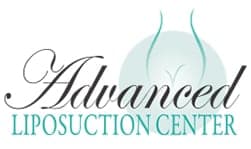Comparing CoolSculpting to SculpSure

In many ways SculpSure is a more robust, modernized version of laser lipolysis. In Comparing CoolSculpting to SculpSure, the laser energy it uses is comparable, and the biggest difference is the larger area it’s capable of treating. During a single session SculpSure can treat up to 4 separate problem areas including the abdomen, flanks, thighs, buttocks, and practically anywhere else unwanted fat deposits are commonly found.
While CoolSculpting is a cold-based therapy SculpSure is a laser-driven, heat based treatment. Both ultimately destroy subcutaneous (beneath the skin) fat cells which are then passed out of the body via the natural healing process. Even better though is water jet liposuction. The fat is immediately gone – forever!
Comparing CoolSculpting to SculpSure
Apart from this glaring difference the techniques achieve similar results and share the benefit of being able to treat large areas in a single session. Also, in both cases it takes about 1-3 months for the full benefits of the treatments to become apparent. This is largely due to the time required for the body to clear away the damaged fat cells.
While both treatments are gentle SculpSure is regarded as causing less bruising. What’s more, according to many it’s slightly more comfortable since intense cold isn’t involved.
While the above may or may not be true CoolSculpting remains the more popular treatment. Why? Mostly because clinicians such as dermatologists and aestheticians are used to using it and are comfortable with the very uniform results it delivers. To date, many more CoolSculpting units are in use today than SculpSure devices. It’s simply a matter of availability and an “if it isn’t broke don’t fix it” attitude.
There’s also an ongoing conversation about safety. Some industry professionals claim that using cold to destroy fat cells is safer than using laser generated heat but more research is needed to say for certain.
Who shouldn’t use CoolSculpting
The amount of fat cells in a limited target area can be reduced safely and effectively with CoolSculpting. It is not suggested for the treatment of obesity and is not regarded as a method of weight loss.
The therapy aims to assist dissolve resistant fat cells, which typically only lose weight through dietary changes and physical activity.
Immune systems that are compromised do not make good candidates for procedures like CoolSculpting. Serious medical issues can also occur in people who have certain illnesses that impair or alter the body’s resistance to the cold.
The following conditions preclude the use of CoolSculpting:
- Breastfeeding, trying to get pregnant, and being pregnant
- Cryoglobulinemia, a condition where abnormally high amounts of proteins occur that ordinarily only increase in reaction to cold
- Cold agglutinin disease, an autoimmune disorder in which changes in temperature cause red blood cells to perish.
- Paroxysmal cold hemoglobinuria, in which red blood cells perish as a result of temperature changes.
Who Should Avoid SculpSure?
However, SculpSure is contraindicated in people with:
- A background with skin cancer
- Melanoma
- Immune-suppressed conditions, such as HIV
- Nerve issues, such as neuropathy
- Cysts or moles (your practitioner should be able to speak to you about removing it)
Patients who are expecting or nursing should not use SculpSure.
For whom is CoolSculpting a good option?
Localized pockets of fatty tissue can be eliminated with CoolSculpting. It is a method of fat loss rather than weight loss.
As a result, a person who wants to shrink or eradicate localized pockets of fatty tissue that endure in spite of exercise and dietary intervention is a strong candidate for CoolSculpting and other cryolipolysis procedures. Treatments using cryolipolysis are less successful in obese and high-fat individuals.
Which treatment has a higher success rate in achieving patient goals?
Determining which treatment, CoolSculpting or SculpSure, has a higher success rate in achieving patient goals depends on several factors, including the specific goals, the treatment area, and individual patient characteristics. However, some general insights can be provided:
- Effectiveness: Both CoolSculpting and SculpSure are FDA-approved and have been shown to effectively reduce fat in targeted areas. Studies and clinical trials for both treatments report significant fat reduction, typically around 20-25% per session.
- Patient Satisfaction: Patient satisfaction rates tend to be high for both treatments. CoolSculpting has a slightly longer track record and more widespread use, which might contribute to a broader base of patient reviews and satisfaction data.
Are there differences in the duration of results between CoolSculpting and SculpSure?
The duration of results for both CoolSculpting and SculpSure is generally similar, with both treatments providing long-term fat reduction. Here are some key points regarding the duration of results:
- Permanent Fat Reduction: Both CoolSculpting and SculpSure destroy fat cells, which are then naturally eliminated by the body’s lymphatic system. These fat cells do not regenerate, meaning the reduction is permanent as long as a stable weight is maintained.
- Maintenance of Results: The longevity of results depends on maintaining a healthy lifestyle, including diet and exercise.
- Time to See Results: Both treatments typically show initial results within a few weeks, with full results becoming apparent after about 2-3 months. This timeline can vary depending on the individual and the area treated.
Are the results of CoolSculpting and SculpSure permanent?
Yes, the results of both CoolSculpting and SculpSure are considered permanent because they destroy fat cells, which the body then eliminates. However, maintaining these results requires a stable weight, as remaining fat cells can expand with weight gain.
SculpSure Candidates Who Would Be Good?
An individual who is within 10 to 20 pounds of their desired weight and has a BMI of 30 is a good candidate for SculpSure.
